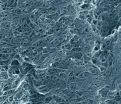(Press-News.org) Hypothermia victims whose hearts have stopped functioning should be transported to a medical facility with advanced heart and lung support equipment, even if that means longer travel time, according to a new study by a University of British Columbia medical resident.
In a study published today in the New England Journal of Medicine, UBC medical resident Dr. Doug Brown and collaborators from Banff, Austria and Italy reviewed the medical literature and concluded that two aspects of the European approach to hypothermia rescue – rewarming and transport –should be adapted and applied worldwide.
"Appropriately equipped hospitals are more dispersed here in North America than in Europe, so transport times are longer," Dr. Brown says. "But our review shows that hypothermic patients can tolerate many hours of cardio-pulmonary resuscitation (CPR) and still have a good neurologic outcome.
"Transporting a patient to a hospital with advanced heart and lung support increases the odds of surviving hypothermia-induced cardiac arrest so much, that it's worth the trip."
For patients who are very cold but with good heart function, the study concludes that traditional invasive re-warming techniques – such as injecting warm water into the chest and abdomen – are not worth the risks of bleeding and infection. Rather, those patients should be warmed using non-invasive methods such as hot air blankets, placement in a warm room, monitoring and supportive care.
"This excellent work by Dr. Brown and his collaborators will inform ongoing updates to the British Columbia Ambulance Service Treatment Guidelines, and will further stimulate discussion on the expanded use of advanced heart and lung support equipment by our critical care transport service," said Dr. John M. Tallon, Vice President, Medical Programs for the British Columbia Emergency and Health Services Commission. "These insights would be particularly helpful in optimizing patient outcomes in B.C., with our challenging geography and distances to critical care centres."
###
NB: Dr. Brown is travelling but available via cell phone and E-mail. Please contact Lorraine Chan (604.822.2644, lorraine.chan@ubc.ca) to arrange interviews.
BACKGROUND | Hypothermia treatment
Hypothermia: Extended exposure to cold can overwhelm a person's ability to generate heat, and lead to a drop in their core temperature. This leads to shivering and confusion, ultimately causing failure of the heart, lungs and other major organs.
Advanced heart and lung support: Cardiopulmonary bypass (CPB) and extracorporeal membrane oxygenation (ECMO) removes carbon dioxide from, and adds oxygen to, a patient's blood, while supporting their blood pressure until the heart is warm enough to pump again. Dr. Brown's review found that hypothermia victims in cardiac arrest have a 50 per cent chance of surviving if CPB or ECMO is used, compared to a survival rate of 0 to 37 per cent when not used.
Field experience: Dr. Brown is an avid mountaineer and has been involved with mountain rescue in British Columbia for 15 years. He earned his MD from UBC in 2004, and is in his final year of post-graduate training in emergency medicine.
Paramedic guidelines: The British Columbia Ambulance Service (BCAS) Treatment Guidelines are being developed by the British Columbia Emergency and Health Services Commission to replace pre-hospital care protocols for paramedic employees. The commission says the guidelines "are not a linear step-by-step approach, but rather provide options within the appropriate scope of practice to allow paramedics to address the patient's specific needs." The guidelines can be viewed at http://bctg.bcas.ca/#
Transporting hypothermia victims to advanced heart and lung care facilities 'worth the trip'
2012-11-15
ELSE PRESS RELEASES FROM THIS DATE:
'Cloning' could make structurally pure nanotubes for nanoelectronics
2012-11-15
Researchers from the University of Southern California (USC) and the National Institute of Standards and Technology (NIST) have demonstrated a technique for growing virtually pure samples of single-wall carbon nanotubes (SWCNTs) with identical structures, a process they liken to "cloning" the nanotubes.* If it can be suitably scaled up, their approach could solve an important materials problem in nanoelectronics: producing carbon nanotubes of a specific structure to order.
Single-wall carbon nanotubes are hollow cylinders of carbon atoms bound together in a hexagonal ...
NIST study suggests carbon nanotubes may protect DNA from oxidation
2012-11-15
Researchers at the National Institute of Standards and Technology (NIST) have provided evidence in the laboratory that single-wall carbon nanotubes (SWCNTs) may help protect DNA molecules from damage by oxidation. In nature, oxidation is a common chemical process in which a reactive chemical removes electrons from DNA and may increase the chance for mutations in cells. More studies are needed to see if the in vitro protective effect of nanotubes reported in the laboratory also occurs in vivo, that is, within a living organism.
"Our findings don't tell us whether carbon ...
Chronic fatigue syndrome -- a system under stress
2012-11-15
Australian researchers have discovered for the first time that reduced heart rate variability – or changes in heart beat timing – best predicts cognitive disturbances, such as concentration difficulties commonly reported by people with chronic fatigue syndrome (CFS). This adds to the growing body of evidence linking autonomic nervous system imbalance to symptoms of this poorly understood disorder.
The findings are reported in the journal PLOS ONE.
Chronic fatigue syndrome is characterised by medically unexplained, disabling fatigue and neuropsychiatric symptoms of ...
Flame retardants linked to neurodevelopmental delays in children
2012-11-15
Berkeley — Prenatal and childhood exposure to flame retardant compounds are linked to poorer attention, fine motor coordination and IQ in school-aged children, a finding by researchers at the University of California, Berkeley, that adds to growing health concerns over a chemical prevalent in U.S. households.
The new study, to be published in the Nov. 15 issue of the journal Environmental Health Perspectives, focuses on PBDEs, or polybrominated diphenyl ethers, a class of persistent, endocrine-disrupting compounds widely found in foam furniture, electronics, carpets, ...
At least one-third of marine species remain undescribed
2012-11-15
At least one-third of the species that inhabit the world's oceans may remain completely unknown to science. That's despite the fact that more species have been described in the last decade than in any previous one, according to a report published online on November 15 in the Cell Press publication Current Biology that details the first comprehensive register of marine species of the world—a massive collaborative undertaking by hundreds of experts around the globe.
The researchers estimate that the ocean may be home to as many as one million species in all—likely not more. ...
Surprising genetic link between kidney defects and neurodevelopmental disorders in kids
2012-11-15
New York, NY (November 15, 2012) — About 10 percent of kids born with kidney defects have large alterations in their genomes known to be linked with neurodevelopmental delay and mental illness, a new study by Columbia University Medical Center (CUMC) researchers has shown.
The study was published today in the online edition of the American Journal of Human Genetics.
Congenital defects of the kidney and urinary tract account for nearly 25 percent of all birth defects in the US and are present in about 1 in every 200 births. Eventually, an evaluation for genomic alterations ...
Appetite suppressant for scavenger cells
2012-11-15
This press release is available in German.
When infected with influenza, the body becomes an easy target for bacteria. The flu virus alters the host's immune system and compromises its capacity to effectively fight off bacterial infections. Now, a team of immunologists at the Helmholtz Centre for Infection Research (HZI) and cooperation partners has discovered that an immune system molecule called TLR7 is partly to blame. The molecule recognizes the viral genome – and then signals scavenger cells of the immune system to ingest fewer bacteria. The researchers published ...
This is your brain on freestyle rap
2012-11-15
Researchers in the voice, speech, and language branch of the National Institute on Deafness and Other Communication Disorders (NIDCD) at the National Institutes of Health (NIH) have used functional magnetic resonance imaging to study the brain activity of rappers when they are "freestyling" – spontaneously improvising lyrics in real time. The findings, published online in the November 15 issue of the journal Scientific Reports, reveal that this form of vocal improvisation is associated with a unique functional reallocation of brain activity in the prefrontal cortex and ...
About one million species inhabit the ocean
2012-11-15
Every taxonomist has calculated the number of existing species within their specialty and estimated the number that remain to be discovered, both through statistical models as based on the experience of each expert. According to Enrique Macpherson, researcher at the Center for Advanced Studies of Blanes (CEAB-CSIC, Spain), who has participated in the study: "Bringing together the leading taxonomists around the world to pool their information has been the great merit of this research".
The statistical prediction is based on the rate of description for new species in recent ...
Penn study decodes molecular mechanisms underlying stem cell reprogramming
2012-11-15
PHILADELPHIA – Fifty years ago, British researcher John Gurdon demonstrated that genetic material from non-reproductive, or somatic, cells could be reprogrammed into an embryonic state when transferred into an egg. In 2006, Kyoto University researcher Shinya Yamanaka expanded on those findings by expressing four proteins in mouse somatic cells to rewind their genetic clocks, converting them into embryonic-like stem cells called induced pluripotent stem cells, or iPS cells.
In early October, Gurdon and Yamanaka were awarded the 2012 Nobel Prize in Physiology or Medicine ...




